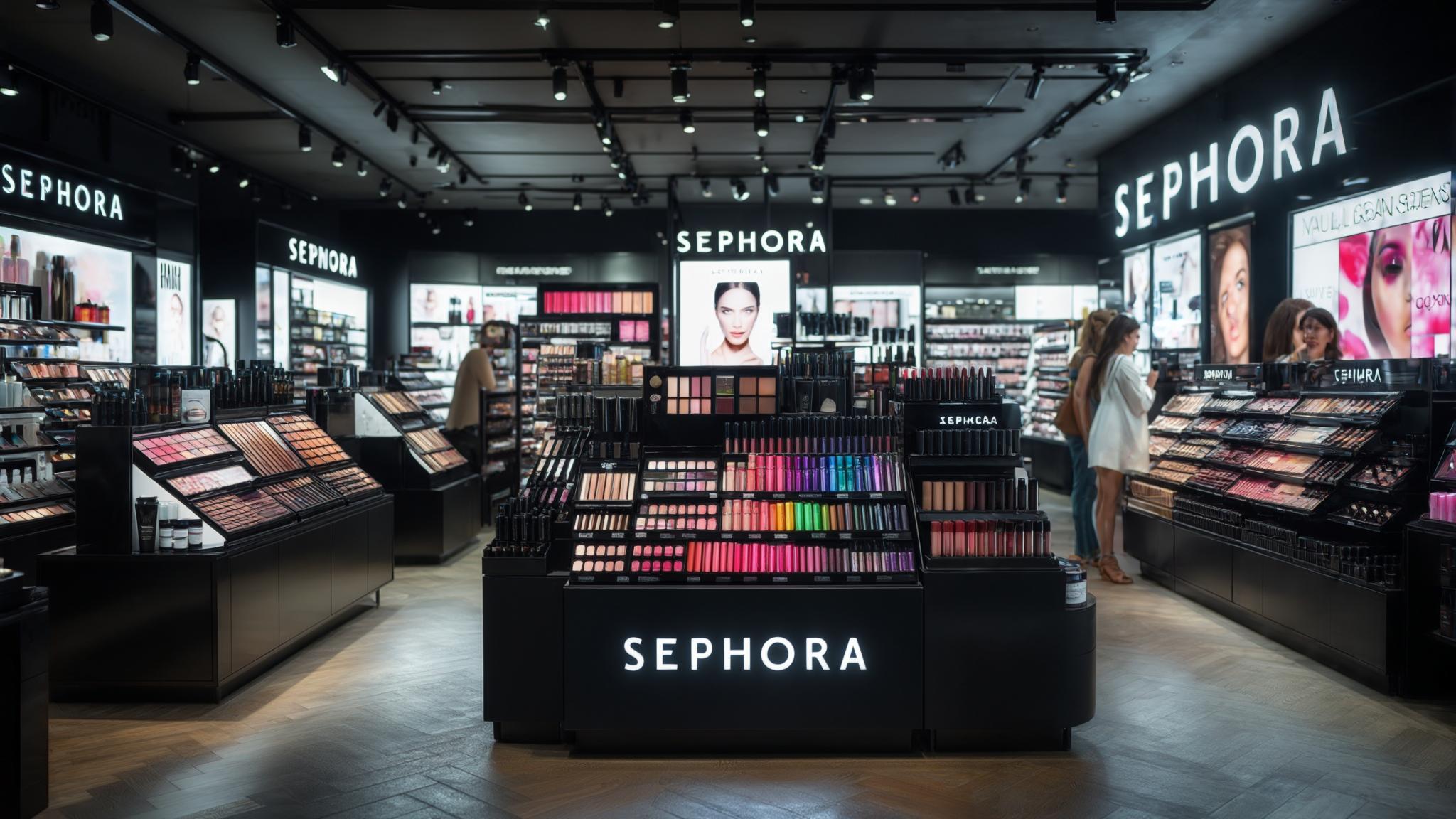Table of Contents
-
Why Sephora’s Digital Revolution Changed Everything
-
The Tech Stack That Made Beauty Shopping Addictive
-
Building Customer Obsession Through Data
-
Marketing Moves That Created a Beauty Empire
-
The Operations Machine Behind the Magic
-
What This Means for Your Business
TL;DR
-
Sephora transformed from a traditional retailer into a tech-forward beauty destination by integrating AR, AI, and mobile technology across all customer touchpoints
-
Their three-tier Beauty Insider program drives customer loyalty through progressive rewards and personalized experiences based on spending levels
-
The brand built a community-first marketing approach, positioning itself as a beauty educator rather than just another retailer
-
Advanced inventory management and omnichannel fulfillment ensure seamless shopping experiences whether customers buy online or in-store
-
Data-driven personalization powers everything from product recommendations to predictive modeling for customer behavior
Why Sephora’s Digital Revolution Changed Everything
Look, beauty shopping used to be such a nightmare. You’d walk into a store, squint under those awful fluorescent lights that made everyone look like they had jaundice, and basically cross your fingers that whatever foundation you picked wouldn’t make you look like an Oompa Loompa once you got home. I mean, we’ve all been there, right?
But here’s the thing – Sephora completely flipped the script on this whole experience. And honestly? They didn’t just slap some fancy tech onto their existing stores and call it a digital transformation. They actually sat down and thought, “What if we could make this entire process not completely suck for people?”
I’ve been watching retailers try to go digital for years now, and most of them totally miss the mark. They either go full robot mode and lose all the human connection that makes shopping fun, or they throw together some basic app and wonder why nobody downloads it. Sephora actually got it right from the beginning, which is pretty rare in retail.
Their loyalty program numbers alone are kind of mind-blowing – 17 million members in North America alone — who are responsible for 80% of the company’s sales. Like, that’s not just customer loyalty anymore, that’s basically building a beauty cult in the best way possible.
What really gets me about their approach is that they didn’t try to replace the fun parts of beauty shopping. You know, the trying stuff on, getting advice from people who actually know what they’re talking about, discovering products you never knew existed. Instead, they made all of that stuff better with technology. When you walk into a Sephora now, it’s like stepping into this beauty playground where your phone actually enhances the experience instead of being a distraction.
This comprehensive Sephora case study demonstrates how retailers can successfully integrate advanced analytics and strategic growth methodologies to transform traditional business models into data-driven customer experiences that drive measurable results.
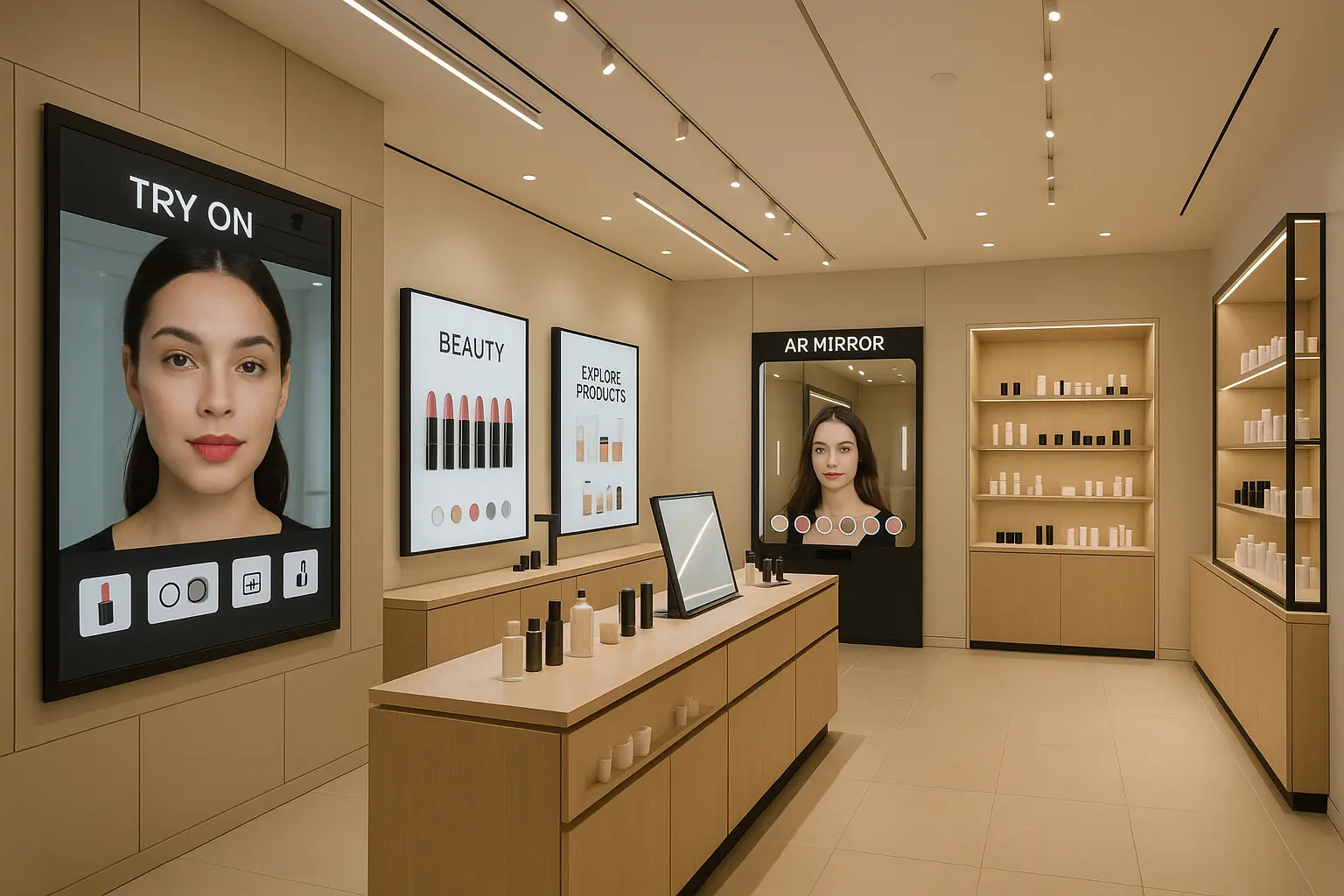
The Tech Stack That Made Beauty Shopping Addictive
Okay, so here’s where things get really interesting. Most companies throw around buzzwords like “AI” and “AR” like they’re magic spells that automatically make customers happy, but Sephora actually built technology that solves real, everyday problems that beauty shoppers face.
You can’t really know if that coral lipstick is going to look amazing or completely wash you out until you actually try it, and let’s be honest – most of us don’t want to spend half our Saturday testing products in a crowded store. Sephora recognized this friction and built tech solutions that actually address these pain points instead of just looking impressive in press releases.
Virtual Try-On That Actually Works
Can we just talk about how game-changing the Virtual Artist feature is for a second? I mean, I was totally skeptical at first because we’ve all tried those cheesy “virtual makeover” apps that make you look like a cartoon character from 2003. But this thing actually works, and it’s kind of scary how accurate it is.
I tested it with a lipstick I already owned just to see if it was legit, and the virtual version looked almost identical to the real thing on my lips. The color matching technology accounts for different lighting conditions and skin tones, which is something those basic filter apps never figured out.
And here’s the kicker – customers who used the Virtual Artist tool were 3 times more likely to complete a purchase than those who didn’t. That makes total sense when you think about it. You’re not gambling with your money anymore – you can actually see what you’re getting before you buy it.
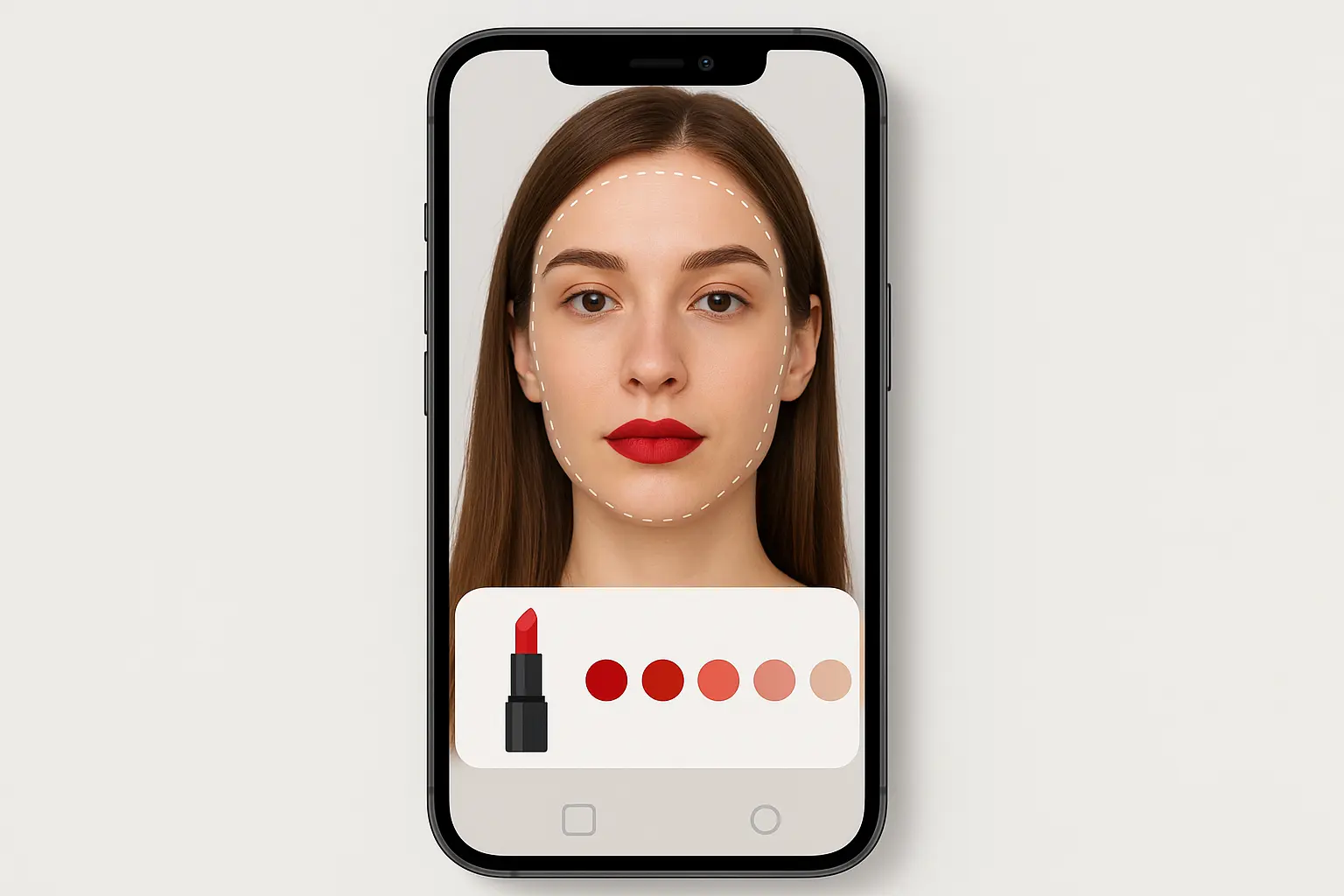
Mobile App That Becomes Your Beauty Assistant
I’m not even embarrassed to admit this – I probably check the Sephora app more than Instagram some days. It’s become my go-to for literally everything beauty-related, and here’s why that’s actually impressive: most retail apps are basically just crappy mobile websites that crash half the time.
The product scanning feature alone is pure genius. You can scan any product in the store and instantly see reviews, check ingredients, and see how it looks on different skin tones. No more awkwardly googling products while some sales associate hovers nearby waiting to help you.
But it goes way beyond just shopping. The app tracks your Beauty Insider points, sends you personalized recommendations that are actually relevant, and you can even book virtual consultations with beauty advisors. Everything you need for your beauty routine lives in one convenient place.
App users spend two times more annually and purchase twice as frequently as the average Sephora customer, which honestly doesn’t surprise me at all. Once you start using it, everything else feels clunky and outdated by comparison.
Think about how seamlessly the app connects your online and offline experiences. When you scan a product in-store, you can immediately see online reviews, check if you have enough loyalty points for a discount, and even find tutorial videos showing how to use the product. It eliminates all those annoying friction points that used to exist between digital and physical shopping.
AI That Actually Understands Your Beauty Preferences
Here’s what’s actually wild about their recommendation system – it gets better over time in ways that feel almost intuitive. It’s not just suggesting random stuff based on what you bought last week or throwing generic “customers also bought” suggestions at you.
The system analyzes your skin tone, your beauty goals, your shopping patterns, even what season it is, to figure out what you might actually want to try next. I’ve noticed my recommendations have gotten weirdly accurate over the months. Sometimes I’ll get a suggestion for something I was literally just thinking about trying.
The AI also powers their Color IQ system, which matches your exact skin tone to recommend foundation shades across different brands. This eliminates one of the biggest headaches in beauty shopping – finding your perfect shade match when every brand has slightly different undertones.
Modern AI-powered personalization systems demonstrate the practical applications of creating continuously learning systems with AI that adapt and improve customer experiences over time through machine learning algorithms.
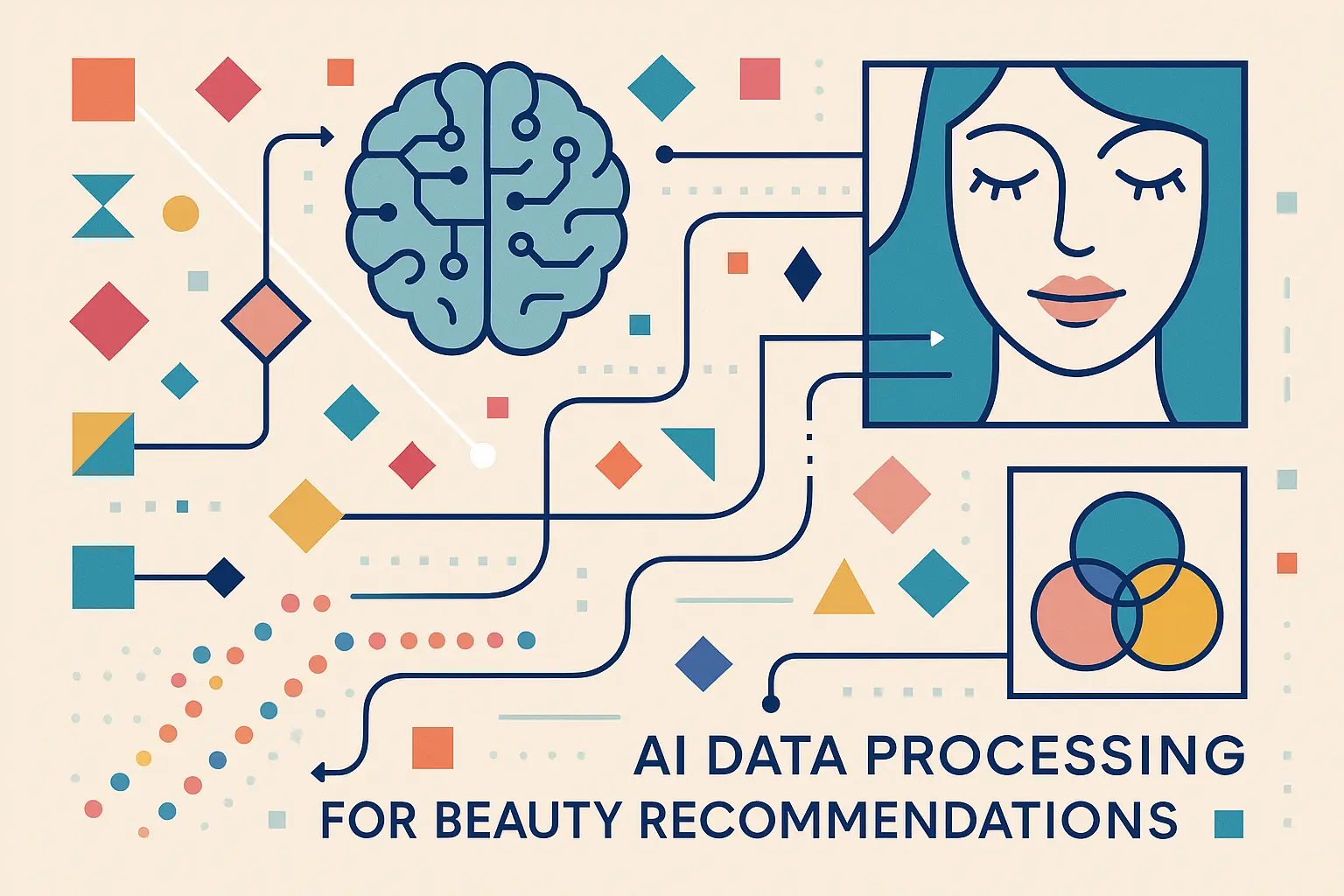
Data Infrastructure That Powers Everything
Now, this is the part most people never think about, but it’s probably the most important piece of the whole puzzle. All of this cool customer-facing technology only works because there’s this massive data operation running behind the scenes that most of us never see.
Every time you browse products, use the virtual try-on, make a purchase, or even just spend extra time looking at a specific item, that information is getting collected and analyzed. Not in a creepy Big Brother way – more like, “Hey, lots of people who bought this foundation also loved this concealer, and they have similar skin tones to you.”
This data infrastructure enables real-time personalization and inventory optimization that actually works. When you see a product recommendation, it’s based on analysis of millions of similar customer interactions. When a product is in stock at your local store, it’s because predictive algorithms anticipated demand based on trends they spotted weeks ago.
The company uses this data to spot beauty trends before they go mainstream, optimize store layouts based on how people actually shop, and even influence which products brands should develop next. It’s this continuous feedback loop that makes the entire beauty ecosystem more responsive to what customers actually want instead of what executives think they want.
|
Technology Component |
Primary Function |
Customer Benefit |
Business Impact |
|---|---|---|---|
|
Virtual Artist AR |
Product try-on simulation |
Confidence in color matching |
3x higher conversion rates |
|
Mobile App Platform |
Unified beauty assistant |
Seamless omnichannel experience |
2x higher customer spending |
|
AI Recommendation Engine |
Personalized product suggestions |
Relevant, timely recommendations |
25% increase in average order value |
|
Data Analytics Infrastructure |
Customer behavior analysis |
Predictive inventory and trends |
30% reduction in stockouts |
Building Customer Obsession Through Data
Most loyalty programs are pretty lame, let’s be honest. You get some points for buying stuff, maybe a birthday discount if you remember to use it, and that’s about it. Sephora’s Beauty Insider program is different because they actually understand that not everyone shops the same way or wants the same things.
A casual makeup user who buys mascara twice a year has completely different needs than someone who’s constantly experimenting with new skincare products and follows every beauty trend. The three-tier system acknowledges this reality instead of treating all customers like they’re identical.
Their customer segmentation and personalization strategy goes way beyond basic demographics like age and income, using behavioral data and beauty preferences to create meaningful customer segments that drive loyalty and increase lifetime value through experiences that actually feel tailored to your specific beauty journey.
The Beauty Insider Program That Actually Rewards Loyalty
The Beauty Insider program works because it recognizes these different customer types and rewards them accordingly. The three tiers (Insider, VIB, Rouge) come with increasingly valuable benefits that actually matter to beauty enthusiasts.
Through their loyalty program, Sephora has been able to consistently bring customers to their website even when they’re not actively shopping, which leads to a 22% increase in cross-sell and a 13-51% increase in upsell revenue. Those numbers are honestly pretty impressive when you think about it.
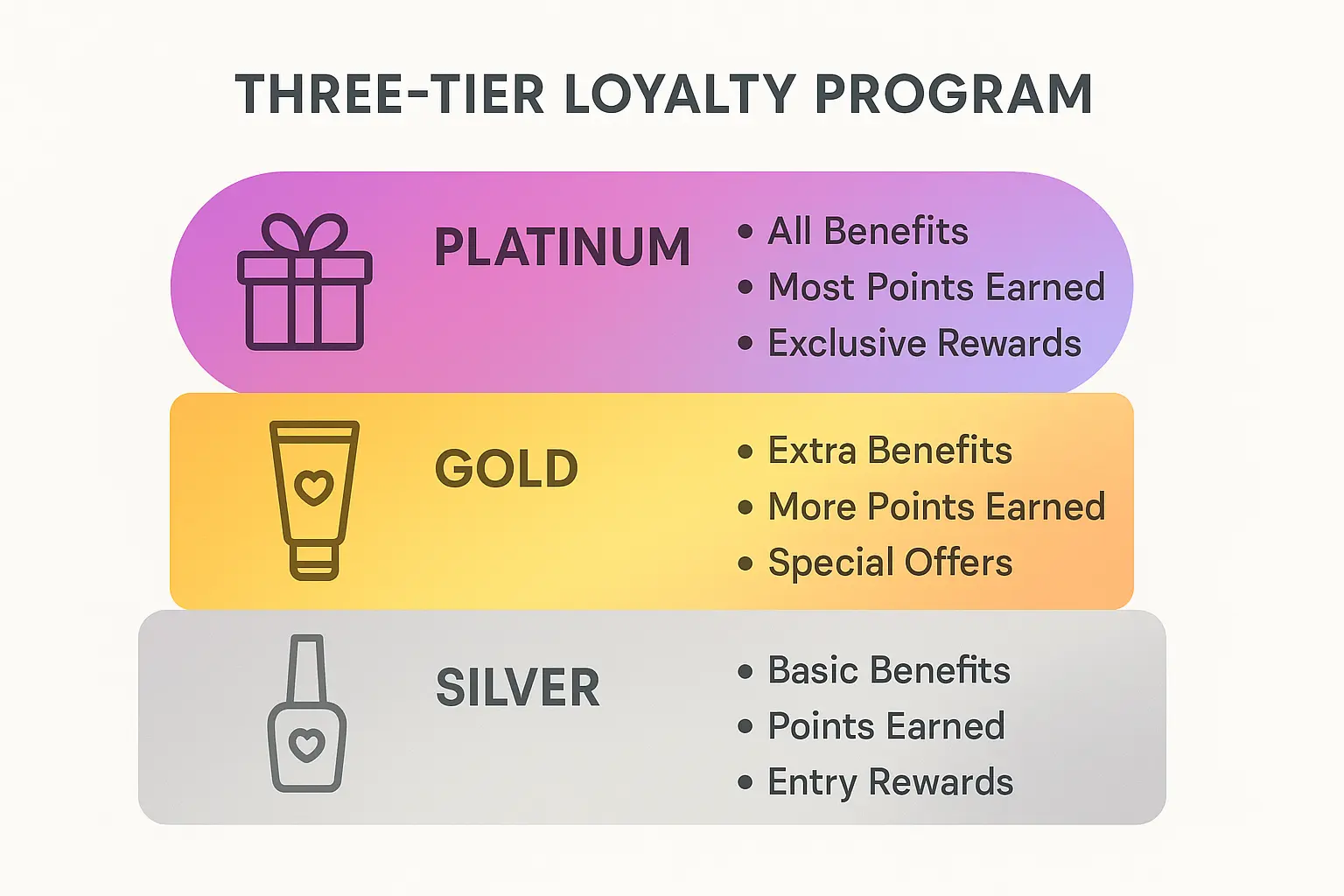
The success of Sephora’s loyalty program demonstrates how businesses can leverage sophisticated marketing ROI calculation methodologies to measure and optimize customer lifetime value across different engagement tiers.
Progressive Rewards That Make Sense
What I really appreciate about the tier system is that the benefits actually matter to people who care about beauty. Early access to new products isn’t just marketing fluff when limited edition items sell out in hours. I’ve seen Rouge members get first dibs on products that regular customers couldn’t even find a month later.
The Rouge tier benefits feel particularly thoughtful. Free shipping, exclusive events, and priority customer service create this VIP experience that justifies the spending required to reach that level. The program focuses on unlocking a genuinely better overall experience rather than just letting you accumulate meaningless points.
And the spending thresholds are realistic too. You don’t need to drop thousands of dollars to reach VIB status, making the program accessible to regular beauty enthusiasts rather than just people with unlimited budgets.
Points System That Encourages Exploration
What I love about the points redemption options is that they strike this perfect balance between achievable and aspirational rewards. You can redeem points for deluxe samples at lower point levels, which is perfect for trying new products without committing to full sizes. And honestly, half the time I end up buying the full size because I discover something I absolutely love.
Higher point redemptions offer full-size products and exclusive experiences. The variety keeps things interesting – sometimes you’re saving up for a new serum sample to test out, other times you’re going for that limited edition set that would cost way more if you bought everything separately.
The system also encourages brand exploration in a really smart way. Point redemptions often feature products from brands you might not have tried otherwise, which expands your beauty routine and potentially creates new brand loyalties you wouldn’t have discovered on your own.
|
Loyalty Tier |
Annual Spending Requirement |
Key Benefits |
Redemption Advantages |
|---|---|---|---|
|
Beauty Insider |
$0 (Free to join) |
Birthday gift, 1 point per $1 spent |
Basic rewards bazaar access |
|
VIB |
$350+ annually |
Enhanced birthday gift, early sale access |
Additional exclusive rewards |
|
Rouge |
$1,000+ annually |
Premium birthday gift, free shipping, exclusive events |
Rouge Reward: 2,500 points = $100 off |
Customer Intelligence That Drives Everything
The depth of customer insight Sephora has developed over the years is honestly impressive. They don’t just track what you buy – they understand why you buy it, when you’re likely to repurchase, and what other products might work with your specific beauty goals and preferences.
Purchase behavior analysis reveals these fascinating patterns about how people actually shop for beauty products. Seasonal trends, brand loyalty patterns, product category preferences – all of this influences how Sephora stocks inventory and creates marketing campaigns that actually resonate with people.
The data shows that beauty shopping is highly personal and often emotional. People develop strong preferences for certain brands, textures, formulations, even packaging styles. Understanding these preferences at an individual level allows for much more relevant product recommendations that feel helpful rather than pushy.
Browsing behavior data is equally valuable. How long someone spends reading product reviews, which ingredients they research, what tutorial content they consume – all of this provides insights into their beauty priorities and knowledge level.
Creating Detailed Customer Profiles
Creating Detailed Customer Profiles
The customer profiles Sephora creates go way beyond basic age and income demographics. They include beauty skill level, preferred brands, specific skin concerns, color preferences, and even shopping behavior patterns like whether someone prefers to research extensively before buying or makes more impulse purchases.
These detailed profiles enable micro-targeting that feels personal rather than intrusive. When you receive a product recommendation, it’s based on your specific beauty profile rather than broad demographic assumptions. The relevance makes the marketing feel genuinely helpful rather than annoying.
The profiles also help with inventory planning and product development. Understanding the distribution of customer preferences helps predict which products will be popular sellers and which might be more niche offerings that appeal to specific segments.
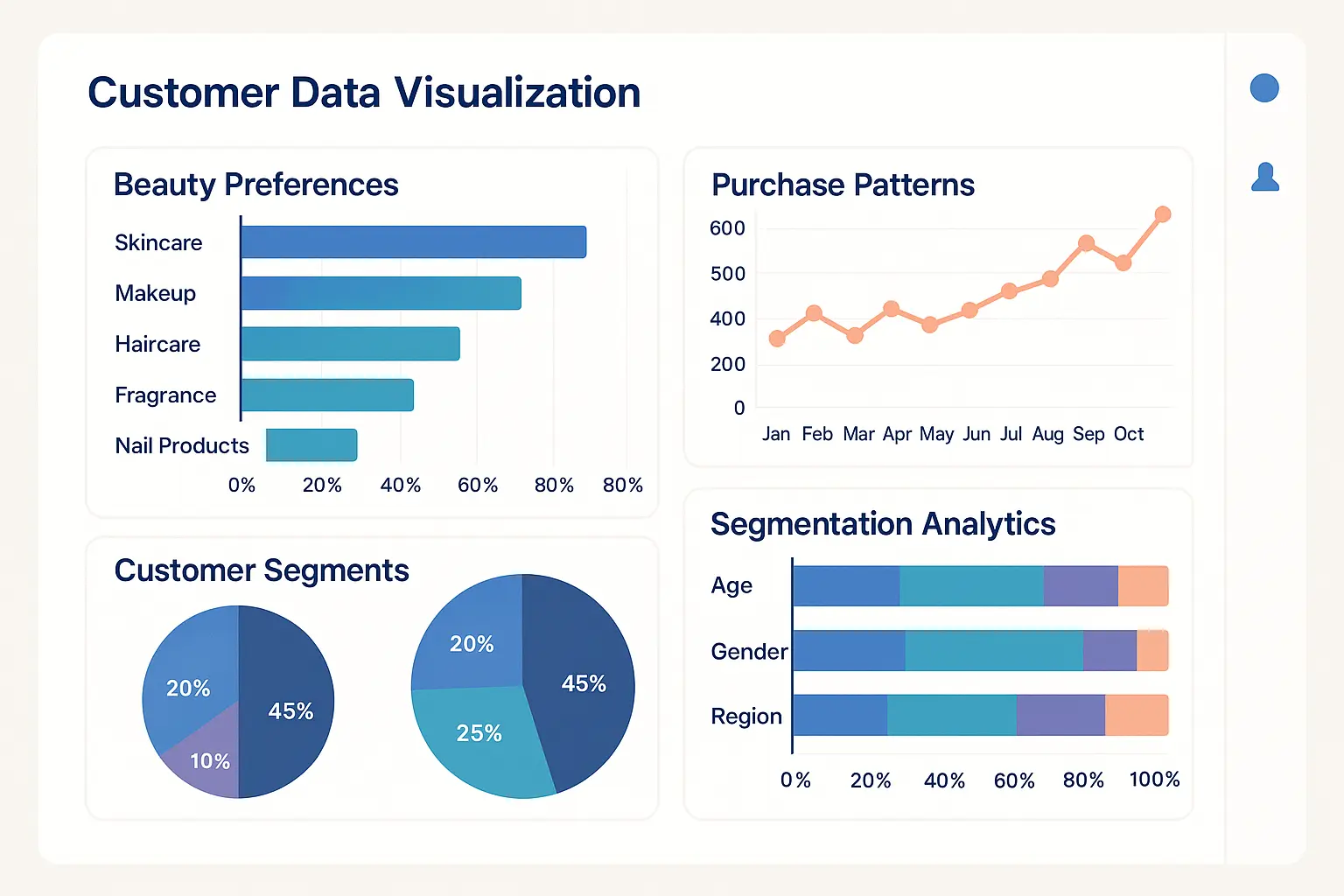
Predictive Analytics for Customer Management
Predictive modeling allows Sephora to be proactive rather than reactive in customer management. They can identify customers who might be losing interest and create targeted campaigns to re-engage them before they completely churn.
Customer lifetime value predictions help prioritize marketing spend and customer service resources. High-value customers get more personalized attention and exclusive offers, while the company can focus on converting promising prospects into loyal long-term customers.
The predictive recommendations engine gets smarter over time as it learns more about customer preferences and behavior patterns. The suggestions become more accurate and relevant, creating this positive feedback loop that improves the customer experience while driving sales.
For example, Sephora’s predictive analytics can identify when a VIB member’s purchasing frequency drops below their normal pattern. The system automatically triggers personalized re-engagement campaigns, such as exclusive product samples or early access to sales, tailored to that specific customer’s beauty interests and past purchase history.
Marketing Moves That Created a Beauty Empire
Traditional beauty marketing often feels pushy and superficial – just endless ads showing impossibly perfect models using products that promise to transform your entire life. Sephora took a completely different approach by focusing on education and community building instead of just trying to sell stuff.
They recognized early on that people don’t just want to buy beauty products – they want to learn about them, get better at using them, and connect with other people who share their interests and passion for beauty.
Sephora revolutionized beauty marketing by positioning itself as an educator and community builder rather than just another retailer, creating content and experiences that actually empower customers while building genuine brand loyalty through shared beauty enthusiasm and knowledge sharing.
Content Strategy That Actually Helps People
The content Sephora creates genuinely solves problems for beauty enthusiasts instead of just showcasing products in glamorous settings. Rather than just posting pretty pictures, they teach techniques, explain complicated ingredients, and help people develop their beauty skills over time.
High-quality video tutorials, step-by-step guides, and expert advice help customers improve their beauty skills while subtly showcasing products in context, creating real value that goes beyond traditional product marketing and establishes long-term customer relationships based on trust and expertise.
Educational Content That Builds Expertise
The tutorial content is genuinely helpful, which is honestly refreshing in a world full of beauty content that’s more about selling than teaching. Professional makeup artists demonstrate techniques using products available at Sephora, but the focus is really on teaching skills rather than pushing specific items.
Step-by-step guides cover everything from basic skincare routines for beginners to advanced makeup techniques for people who want to level up their skills. The content acknowledges that people have different experience levels and beauty goals, providing value for both someone just starting to wear makeup and experienced beauty enthusiasts looking to try new trends.
Expert advice content features dermatologists, makeup artists, and beauty chemists explaining ingredients, techniques, and trends in ways that actually make sense. This educational approach helps customers make informed decisions while positioning Sephora as a trusted source of beauty knowledge rather than just another place to buy stuff.
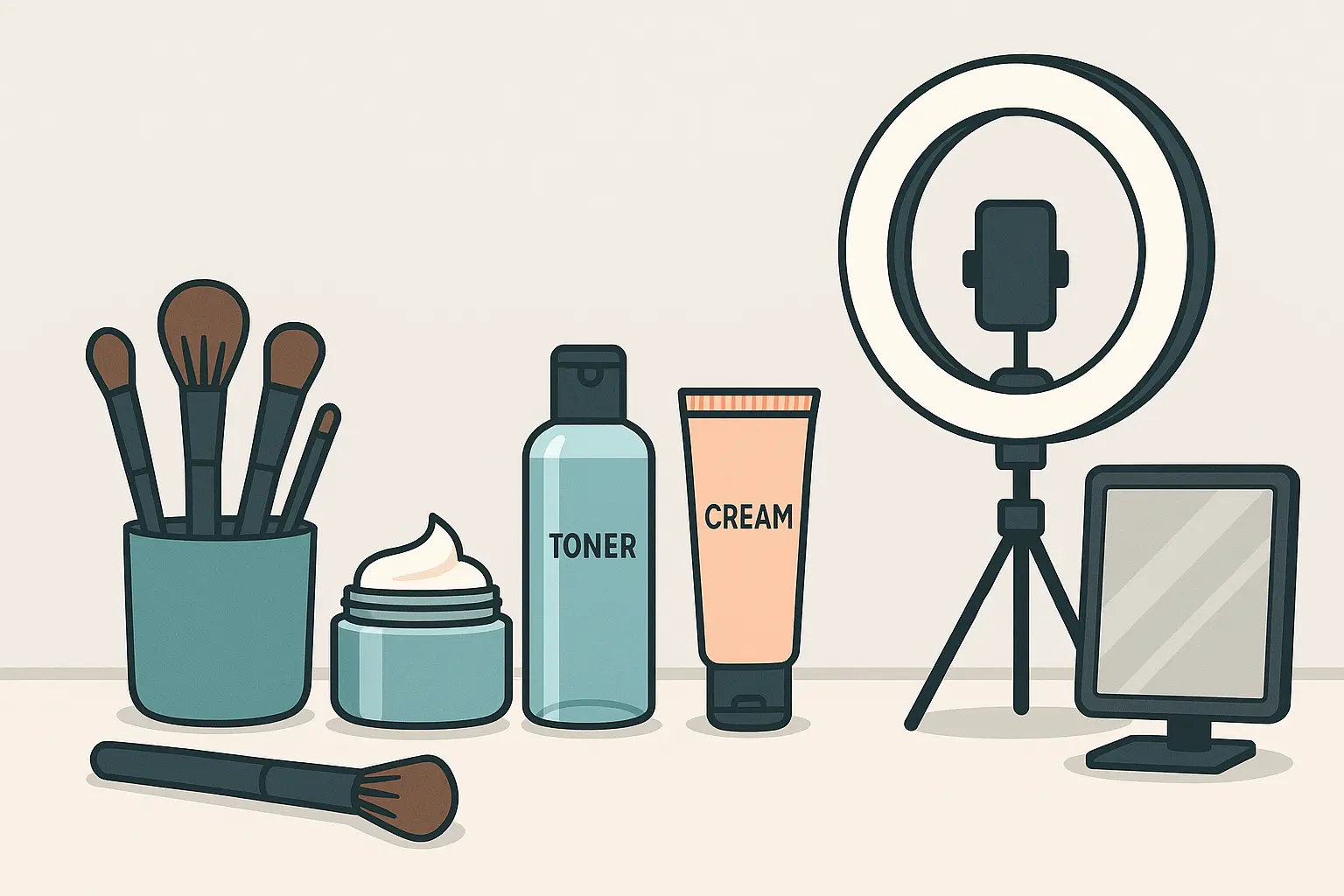
Strategic Partnerships That Feel Authentic
Sephora’s influencer partnerships feel way more authentic than typical sponsored content because they focus on genuine education and real product experiences. Influencers create tutorials and honest reviews that provide actual value to their audiences while featuring Sephora products naturally in the content.
The brand partnerships go beyond simple product placement too. Sephora collaborates with beauty brands to create exclusive products, limited edition sets, and educational content that benefits everyone involved – the brands, Sephora, and most importantly, the customers.
Professional makeup artist partnerships lend real credibility to the educational content. When a working makeup artist who does red carpet looks demonstrates techniques using Sephora products, it carries way more weight than traditional advertising because the expertise is genuine and proven.
Community Building That Creates Belonging
This is probably what really sets them apart from other beauty retailers. They created actual spaces where beauty enthusiasts can connect, share experiences, and learn from each other. This builds emotional connections that go way beyond just buying and selling products.
Sephora has taken community building to incredible heights with innovative experiences. “SEPHORiA: House of Beauty,” attracted participants from 87 countries and featured over 4000 attendees for the in-person event, with 55 brands engaged across in-person and virtual experiences. That’s not just marketing – that’s building a genuine global community around shared passion.
Digital Community Platform for Beauty Enthusiasts
The Beauty Insider Community platform works like a beauty-focused social network where customers can ask questions, share their looks, and get advice from other community members. This peer-to-peer interaction creates value that Sephora couldn’t provide through traditional marketing alone.
User-generated content from the community provides authentic product reviews and inspiration that you just can’t get from brand-created content. When real customers share their honest experiences with products, it’s way more trustworthy and influential than professional marketing materials.
The platform also serves as this amazing feedback mechanism for Sephora. Customer discussions reveal product preferences, common pain points, and emerging trends that inform inventory decisions and product development priorities in real time.
In-Store Experiences That Create Memories
In-store events transform Sephora locations from basic retail spaces into community gathering places. Beauty classes teach new techniques while creating social experiences that customers actually remember and want to share with friends.
Product launch events generate genuine excitement and exclusivity around new releases. Customers feel like they’re part of something special rather than just making another purchase. These events often sell out, creating additional demand and social proof that drives even more interest.
The hands-on nature of in-store experiences can’t be replicated online. Customers can try products, get personalized advice, and interact with beauty experts in ways that build stronger brand connections than digital interactions alone could ever achieve.
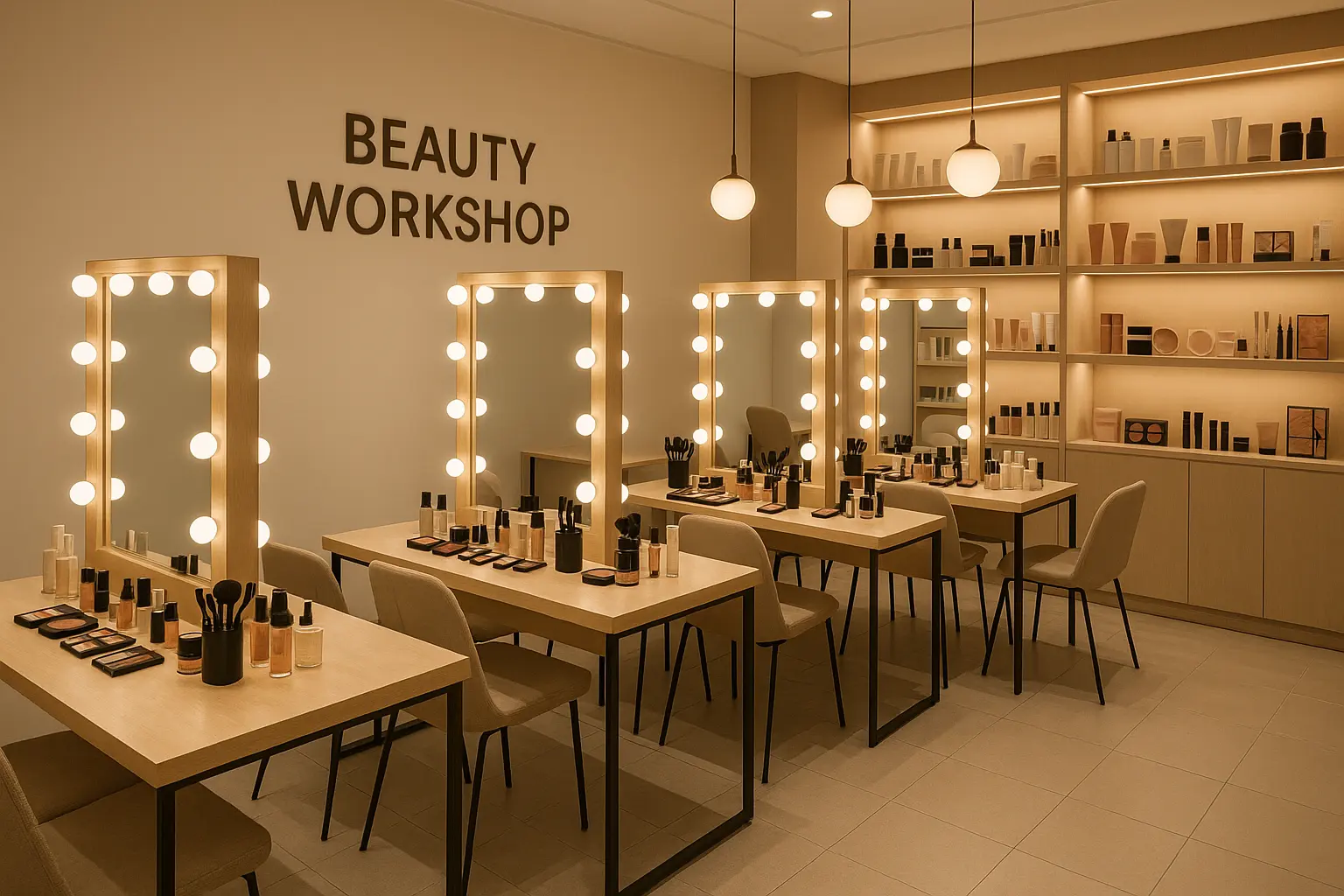
User-Generated Content That Builds Authenticity
Customer-created content provides authentic social proof that actually influences purchase decisions. When real people share their experiences with products, it carries way more weight than professional marketing content because the motivation is genuine rather than commercial.
The user-generated content also provides diverse representation that traditional marketing often lacks. Customers can see how products look on people with similar skin tones, ages, and beauty styles, making purchase decisions feel more confident and informed.
Encouraging content creation builds deeper customer engagement too. When customers invest time in creating and sharing content about Sephora products, they develop stronger emotional connections to the brand and become genuine advocates within their social networks.
Sephora’s #SephoraSquad campaign encourages customers to share their makeup looks using specific hashtags. The brand then features the best submissions on their social media channels and in-store displays, creating this positive cycle where customers feel recognized and motivated to continue engaging with the community.
The Operations Machine Behind the Magic
The seamless customer experience Sephora provides requires incredibly sophisticated operations behind the scenes that most people never think about. Customers expect products to be available when they want them, whether they’re shopping online, through the app, or walking into a physical store. Meeting these expectations requires advanced systems that are invisible to customers but absolutely essential to the experience.
You know that feeling when you really want a specific product and it’s sold out everywhere? Or when you order something online and it takes forever to arrive? Sephora’s operational excellence is designed to eliminate those frustrating moments that can completely kill the shopping experience.
Inventory Systems That Predict What You Want
Inventory management in beauty retail is particularly challenging because trends change incredibly quickly and seasonal demand varies dramatically. Sephora’s systems need to balance having enough popular products in stock without getting stuck with excess inventory when trends shift or seasons change.
Sephora’s AI-driven forecasting led to a 30% reduction in stockouts, especially during peak sales seasons and viral product waves, which is honestly impressive when you consider how unpredictable beauty trends can be.

Forecasting That Actually Works
The demand forecasting system considers factors that go way beyond just looking at historical sales data. Social media trends, influencer mentions, seasonal patterns, weather data, and even cultural events all influence beauty product demand in ways that traditional forecasting completely misses.
Beauty trends can literally explode overnight thanks to TikTok or Instagram, creating sudden demand spikes that would completely overwhelm traditional inventory systems. Sephora’s algorithms monitor social signals and can trigger rapid inventory adjustments when they detect emerging trends before they hit mainstream consciousness.
Seasonal forecasting accounts for the complex patterns in beauty shopping that most retailers struggle with. Holiday gift sets, summer skincare needs, back-to-school makeup trends, wedding season demands – all of these create predictable but complex demand patterns that require sophisticated modeling to handle effectively.
Fulfillment That Works From Anywhere
The multi-channel fulfillment system is pretty genius – your online order might actually be fulfilled from a nearby store rather than a distant warehouse, which cuts shipping time and costs significantly. This flexibility also helps balance inventory across different locations.
Buy-online-pickup-in-store options work seamlessly because the inventory systems are completely integrated across all channels. You can reserve products online and actually trust that they’ll be waiting when you arrive at the store, which sounds basic but is surprisingly hard to execute well.
Ship-from-store capabilities turn every Sephora location into a mini distribution center. This dramatically expands fulfillment capacity during peak periods like Black Friday and reduces shipping distances for faster delivery times.
Digital Transformation Checklist for Retailers:
-
Integrate inventory systems across all channels (online, mobile, in-store)
-
Implement predictive analytics for demand forecasting
-
Enable ship-from-store and buy-online-pickup-in-store capabilities
-
Deploy real-time inventory tracking and automatic reordering
-
Create unified customer profiles across all touchpoints
-
Establish social media monitoring for trend detection
-
Build flexible fulfillment networks for peak demand periods
Supply Chain Innovation That Stays Flexible
Beauty retail requires supply chain flexibility that most other industries don’t need. New products launch constantly, trends change based on social media influence, and customer preferences can shift dramatically based on seasonal factors or cultural moments.
The relationships Sephora has built with beauty brands go way beyond simple buyer-seller transactions. These partnerships often result in exclusive products, early access to new launches, and collaborative marketing campaigns that benefit both parties while creating unique value for customers.
Vendor Relationships That Create Advantages
Exclusive product access creates differentiation that customers genuinely value. When you can only get certain products or limited edition shades at Sephora, it drives traffic and builds loyalty in ways that basic discounting never could.
Collaborative product development with brands allows Sephora to influence what gets created based on their extensive customer data and trend insights. This ensures new products align with what customers actually want rather than what brand executives think they want, leading to higher success rates for new launches.
The partnerships also enable unique experiences like exclusive brand events, early access to launches, and limited edition collaborations that create genuine excitement and exclusivity for Beauty Insider members.
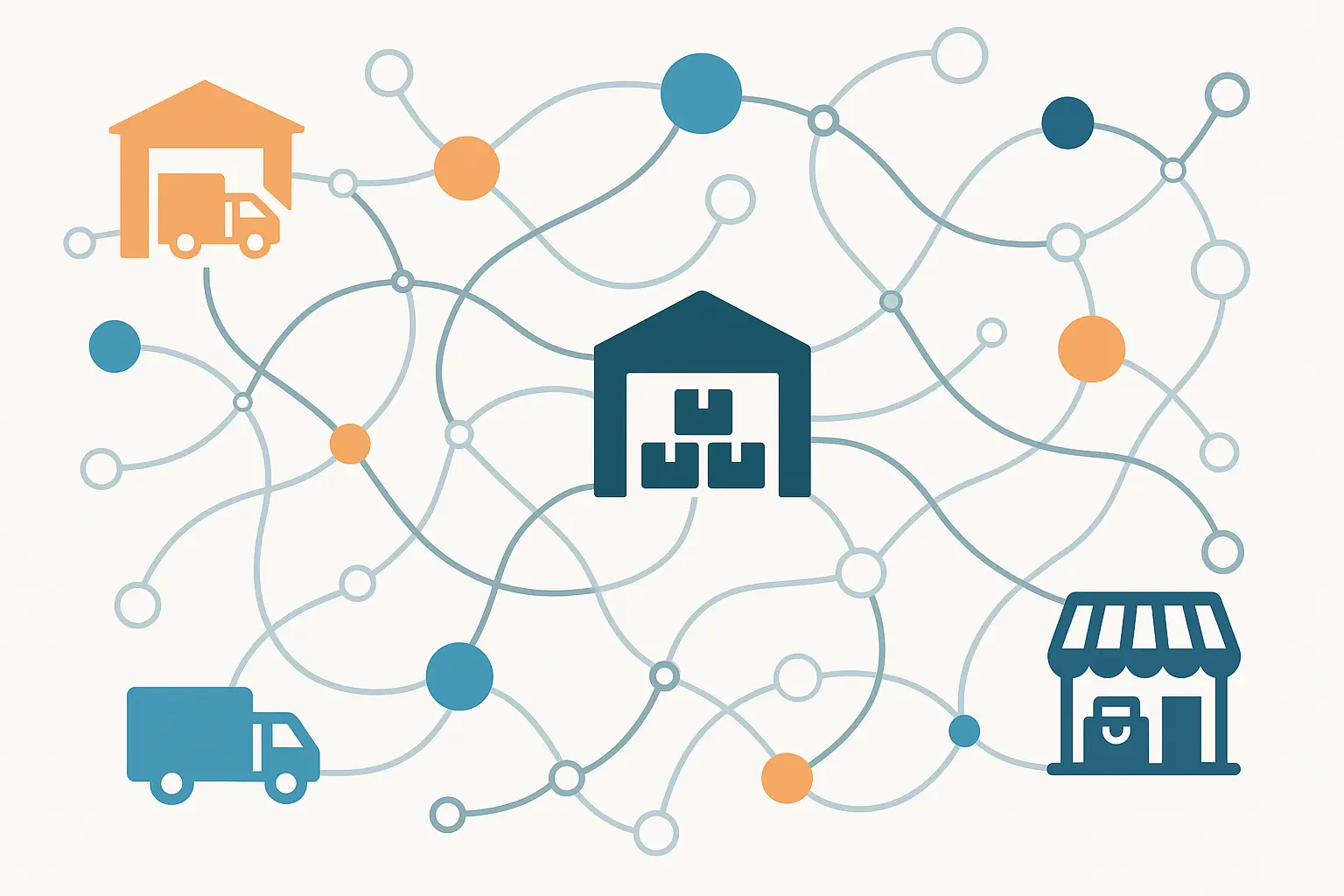
Distribution Networks That Deliver Fast
The distribution network is designed for speed and efficiency without sacrificing reliability. Multiple distribution centers positioned strategically across the country mean most customers can receive orders within 1-2 days without paying for expensive expedited shipping.
Route optimization algorithms constantly adjust shipping patterns based on current demand, inventory levels, and delivery commitments. This reduces costs while maintaining the fast delivery times that customers have come to expect from modern e-commerce.
The same distribution network serves both online customers and retail stores, creating economies of scale and ensuring consistent product availability across all channels. Stores receive regular replenishment that keeps popular items in stock while minimizing overstock situations.
Voice search is also transforming how customers interact with beauty brands. “The beauty brand Sephora has harnessed the potential of voice search to elevate the shopping experience, both in-store and online. Their voice-activated shopping assistant, Sephora Voice, is compatible with Amazon Alexa, Google Assistant, and Apple HomePod”, showing how forward-thinking retailers are preparing for the next wave of customer interaction preferences.
What This Means for Your Business
Sephora’s success didn’t happen by accident or luck. Every single aspect of their strategy – from technology integration to customer segmentation to operational excellence – was built on data-driven decision making and continuous optimization based on real customer feedback and behavior.
The thing is, these same principles can absolutely transform other businesses, but you need the right expertise and approach to implement them effectively without just copying surface-level tactics that might not work for your specific situation.
The Marketing Agency’s scientific approach to marketing mirrors the methodical, data-driven strategy that made Sephora so successful. We use advanced analytics to identify customer segments that traditional agencies completely miss, create attribution models that show how different marketing channels actually work together, and implement AI-driven optimization that continuously improves results over time.
Our performance-based growth strategies focus on measurable outcomes rather than vanity metrics that look good in reports but don’t actually drive business results. Whether you need omnichannel attribution modeling, AI-enhanced personalization, or optimization for modern search behavior and customer journeys, we have the expertise to help you achieve the kind of transformation that Sephora pioneered in their industry.
Ready to build a data-driven marketing strategy that actually works for your business? We can help you create the customer experiences and measurable business results you’re looking for.
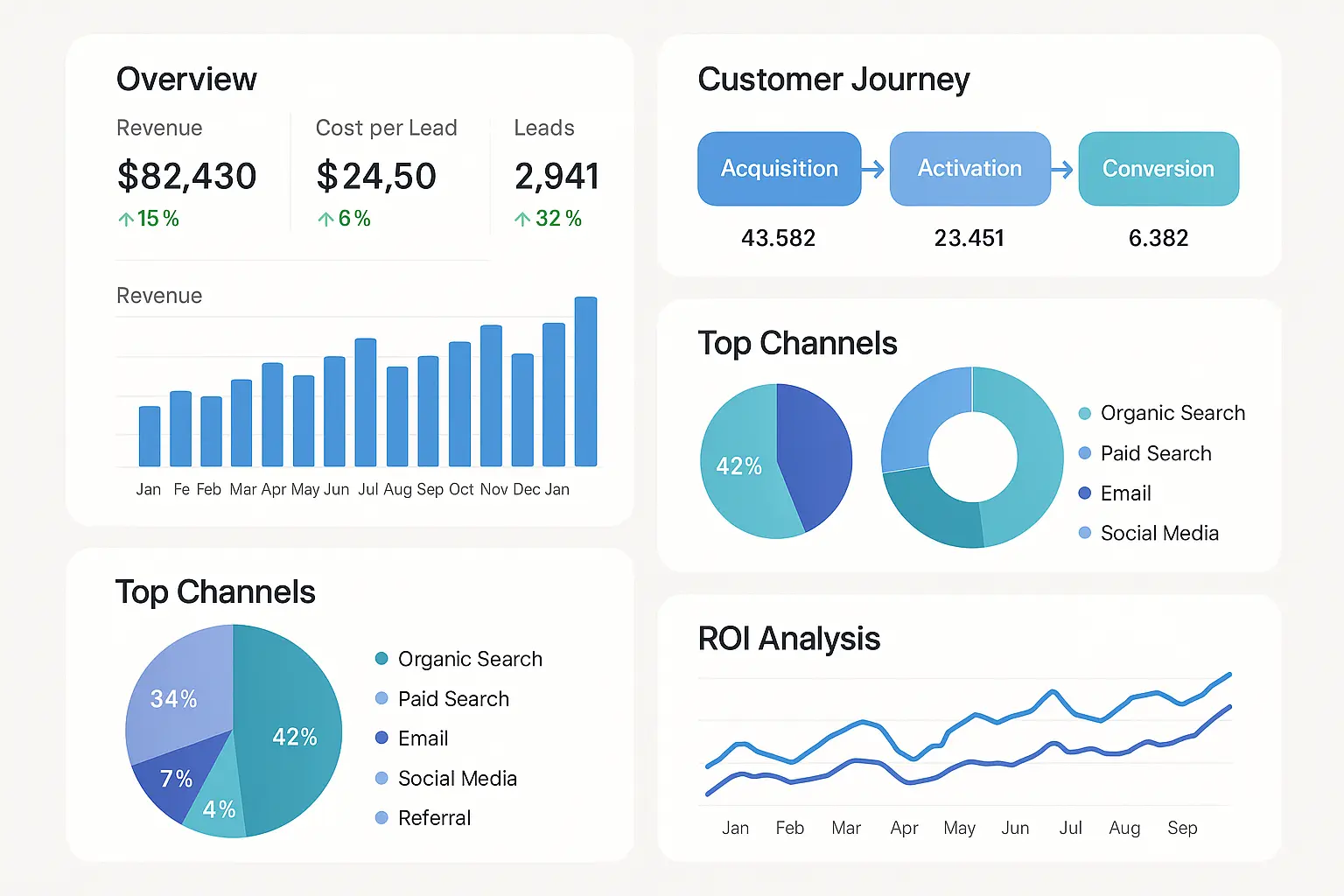
Final Thoughts
Sephora’s case study proves that digital transformation isn’t just about adding cool technology to existing processes
Sephora’s case study proves that digital transformation isn’t just about adding cool technology to existing processes – it’s about completely reimagining how customers interact with your brand across every single touchpoint they have with you.
Their success came from understanding that modern consumers want personalized, seamless experiences that combine the convenience of digital shopping with the engagement and discovery aspects of physical retail. But here’s the key – they did it all based on deep customer insights rather than just following industry trends or copying what other companies were doing.
The lesson isn’t that every business needs AR try-on features or three-tier loyalty programs. It’s that successful companies use data to understand their customers at a really deep level, then build experiences that solve genuine problems while creating emotional connections that go beyond just transactions.
Whether you’re in beauty, retail, or any other industry, the core principles remain the same: understand your customers deeply through data, solve their real problems with thoughtful solutions, and create experiences that build genuine emotional connections. That’s what transforms customers into community members, and community members into passionate advocates who actually want to tell their friends about your brand.
What makes Sephora’s approach particularly powerful is how all these different elements work together as a complete system. The technology enables better personalization, the data drives smarter inventory decisions, the community building creates lasting loyalty, and the operational excellence delivers on all the promises made through marketing. It’s a comprehensive, integrated approach rather than just random tactics thrown together, and that’s what makes it so effective at driving sustainable, long-term business growth.


